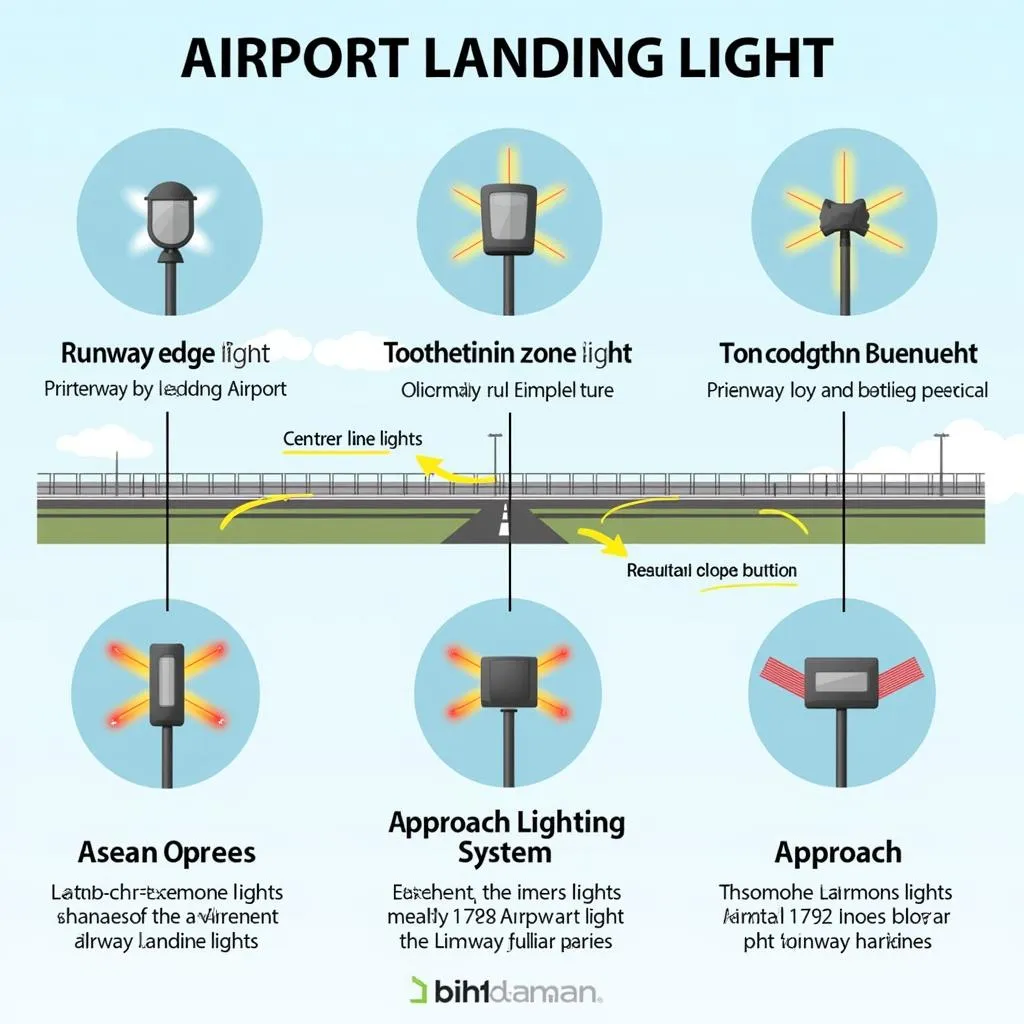Landing at an airport in Southeast Asia after dark is always an exciting experience. As your Asea airline flight descends, a network of lights emerges from the darkness, guiding your plane safely to the runway. These are the airport landing lights, essential for nighttime and low-visibility landings, playing a crucial role in ensuring the safety and efficiency of air travel.
The Science Behind the Shine: Understanding Airport Landing Lights
Airport landing lights, also known as approach lighting systems (ALS), are a meticulously designed array of high-intensity lights strategically positioned to provide visual guidance to pilots during the critical landing phase. They help pilots:
- Judge distance and altitude: The lights’ spacing and configuration offer visual cues, allowing pilots to accurately estimate their position relative to the runway threshold.
- Maintain proper alignment: The lights guide pilots to maintain the correct approach path, ensuring a safe and stabilized landing.
- Enhance situational awareness: Especially during low visibility conditions (fog, rain, or darkness), these lights provide essential visual references, significantly improving the pilot’s awareness of the runway environment.
Types of Airport Landing Lights: A Symphony of Illumination
 Types of Airport Landing Lights
Types of Airport Landing Lights
A typical ASEAN airport utilizes a combination of various landing lights, each serving a specific purpose:
- Runway Edge Lights: These white lights define the lateral boundaries of the runway, providing a clear visual reference for pilots during takeoff and landing.
- Touchdown Zone Lights: A series of white lights extending from the touchdown zone to the midpoint of the runway, aiding pilots in identifying the ideal landing spot.
- Centerline Lights: As the name suggests, these white lights run down the center of the runway, assisting pilots in maintaining their alignment during the ground roll.
- Approach Lighting Systems (ALS): These are a configuration of high-intensity lights extending outward from the runway threshold. The specific pattern and color of these lights provide crucial guidance on the approach path, helping pilots maintain the correct glide slope.
Navigating the Night: How Pilots Use Landing Lights
Landing a plane at night requires precision and skill, and airport landing lights play a vital role in assisting pilots. Pilots undergo extensive training to interpret the visual cues provided by these lights, using them to:
- Establish and maintain a stabilized approach: Pilots utilize the approach lighting system to align the aircraft with the runway centerline and descend at the correct angle.
- Determine the runway’s location and orientation: The runway edge lights and touchdown zone lights help pilots visually acquire and confirm the runway’s position.
- Judge distance and altitude with precision: By observing the changing perspective of the landing lights, pilots can accurately estimate their distance and altitude relative to the runway.
 Pilot's Perspective of Landing Lights
Pilot's Perspective of Landing Lights
“The precision of airport landing lights is essential for safe nighttime operations,” says Captain Anya Lim, a senior pilot with extensive experience flying in Southeast Asia. “They are our lifeline in low visibility, providing the visual references we need to make safe and efficient landings.”
ASEAN’s Commitment to Aviation Safety: Illuminating the Future
ASEAN member states prioritize aviation safety, continually investing in modernizing airport infrastructure, including advanced lighting systems. The region’s commitment to enhancing air travel safety ensures that its airports meet international standards, contributing to the growth of the aviation industry and facilitating seamless travel experiences within Southeast Asia and beyond.
FAQs: Shining a Light on Common Queries
What is the purpose of red lights on airport runways?
Red lights typically indicate the end of the runway or areas where aircraft are prohibited from entering.
Why do some airport lights flash?
Flashing lights often serve as warnings to pilots, signaling potential hazards or obstructions on or near the runway.
How bright are airport landing lights?
Airport landing lights are incredibly powerful, designed to be visible from miles away, even in adverse weather conditions. Their intensity ensures pilots have adequate visual guidance during nighttime or low-visibility landings.
Need Help Navigating ASEAN’s Skies?
If you need any assistance or have further questions about ASEAN’s aviation industry, please don’t hesitate to contact us. You can reach us at:
Phone Number: 0369020373
Email: [email protected]
Address: Thôn Ngọc Liễn, Hiệp Hòa, Bắc Giang, Việt Nam.
Our dedicated customer service team is available 24/7 to assist you with any inquiries. You can also explore other informative articles on our website to learn more about ASEAN’s vibrant culture, travel destinations, and dynamic economies.